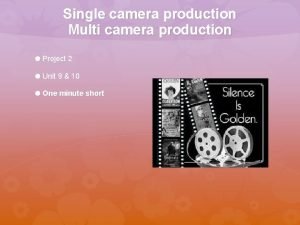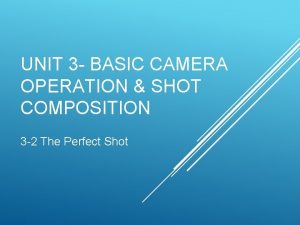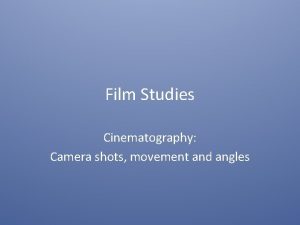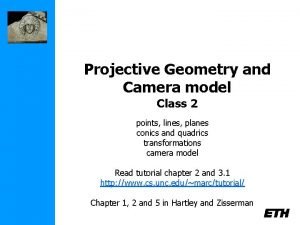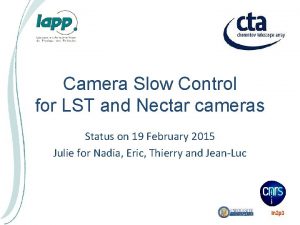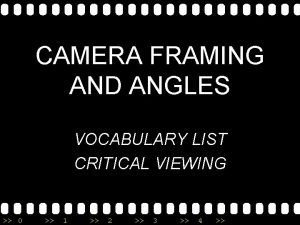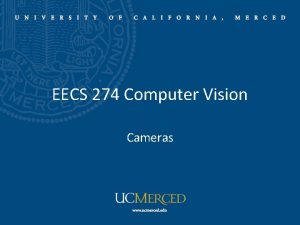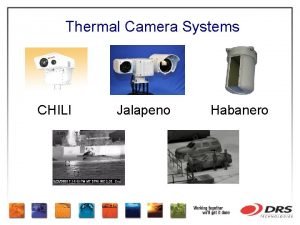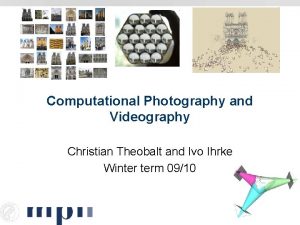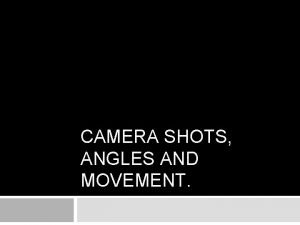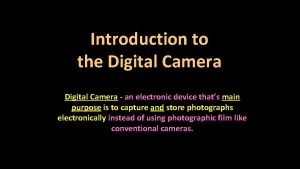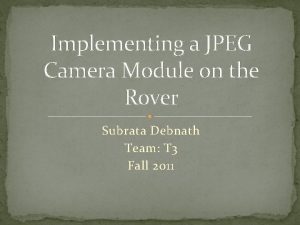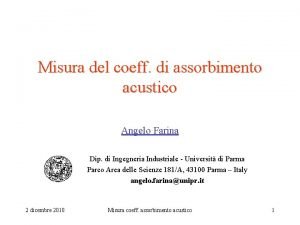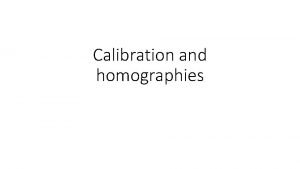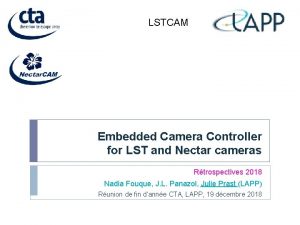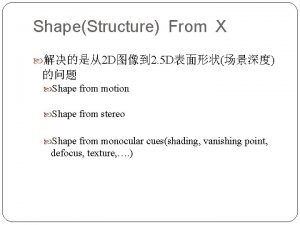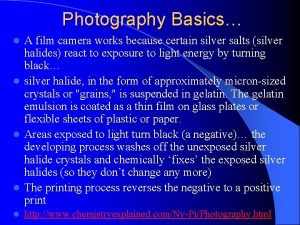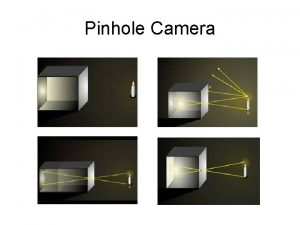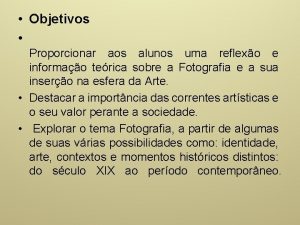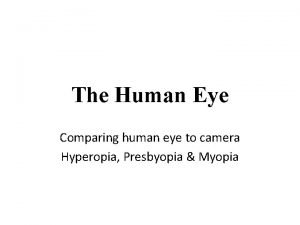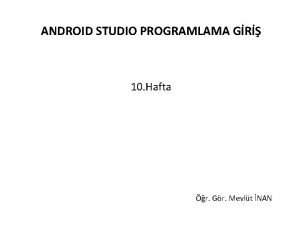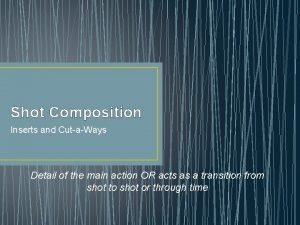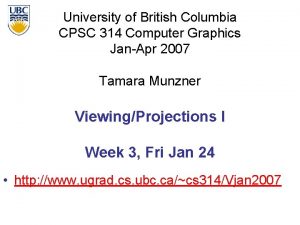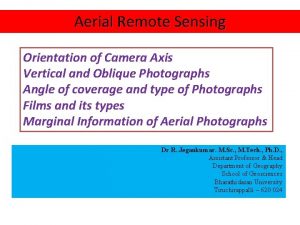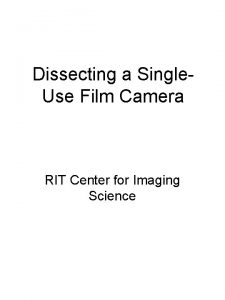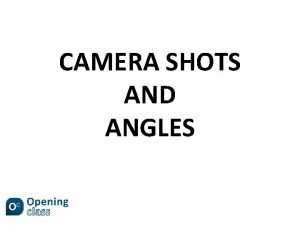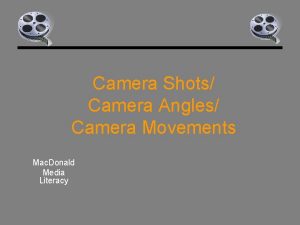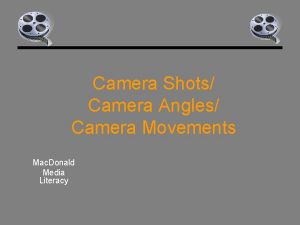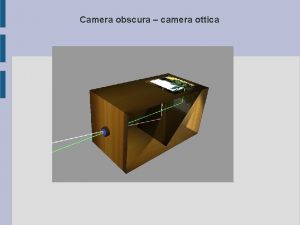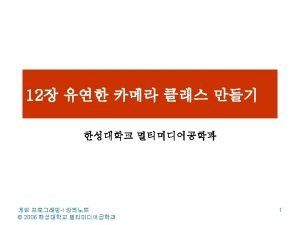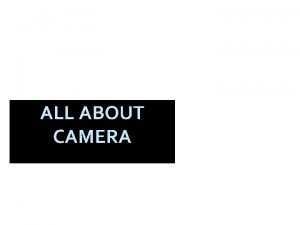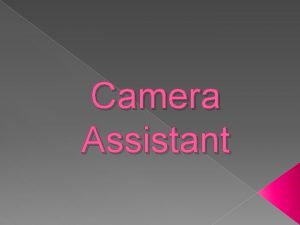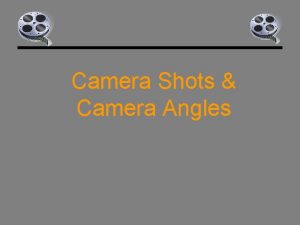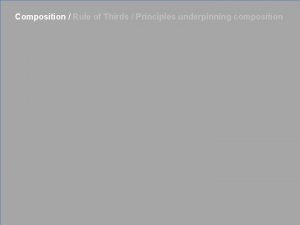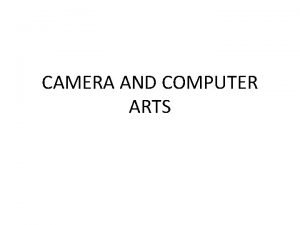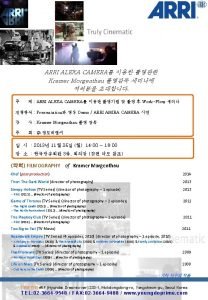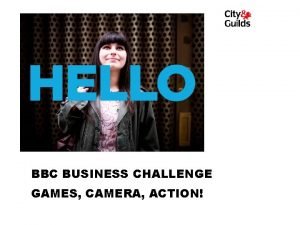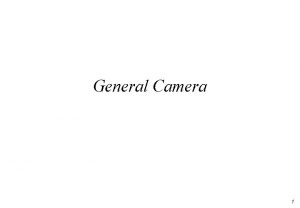Camera Composition What is Camera Composition Camera composition





































- Slides: 37

Camera Composition

What is Camera Composition? Camera composition: refers to how you frame your subject and anything else that is in the frame. Play – Video Basics

Rule of Thirds • A major “rule” of composition is that the subject should be placed slightly to the right or to the left of the center • This is known as the rule of thirds. • This rule can be broken when necessary

Headroom • Space between the top of a person’s head to the upper screen edge. • Avoid leaving too much headroom. • Avoid cutting off the top of the head. TOO MUCH HEADROOM

Noseroom • Space between the front of a person’s face to the edge of the screen. • This is also known as the leadroom.

5 Basic Shots 1. Extreme Long Shot 2. Long Shot 3. Medium Shot 4. Close Up 5. Extreme Close Up

Extreme Long Shot • Object seen from great distance. • The largest shot the camera can get • Includes a lot of the surroundings

Extreme Long Shot ELS

Long Shot • Subject framed from head to toe only

LS

Medium Shot • Subject framed from the waist up • Appropriate when the subject is speaking without too much emotion • Works well when the intent is to deliver information (commonly used by television news reporters)

MS

Close Up • Object or any part of it seen at close range. • Head and shoulders should be included, if not it can appear like a floating head • A close-up of a person emphasizes their emotional state. • A close-up exaggerates facial expressions which convey emotion. • The viewer is drawn into the subject's personal space and shares their feelings.

CU

Extreme Close Up • Object framed very tightly • very magnified • Only a specific part of a person or object can be seen

ECU

Over the Shoulder Shot • Camera looks over the shoulder of one subject to see the other subject • Helps to establish the position of each person, and get the feel of looking at one person from the other's point of view.

O/S

2 -Shot 2 subjects In frame

TS or 2 -shot

3 -Shot 3 subjects in frame


Identify the Following Shots







Camera Movement • Movement is what videos are all about. • Whenever possible, find a way to integrate movement within the frame.

Movement -- Pan • A pan is a left to right, or a right to left, horizontal movement of the camera on its own axis.

The purpose of the pan movement • Follow moving subjects • Shift an audience's attention from subject to subject • Simply display a Panoramic landscape.

Pan Tip • Try and Pan slowly • Keep the camera still for a few seconds at the beginning and end of a pan (helps with editing)

Movement -- Tilt • A tilt is an up or down vertical movement of the camera on its own axis. • Tilts are great for capturing vertical action.

Movement -- Zoom • Zoom is the most overused shot in film and video. • Use sparingly

Movement -- Dolly • Physically moving the camera & tripod toward or away from the set or subject • Dolly In – To push the camera toward the subject • Dolly Out – to push the camera away from the subject

Movement -- Truck • Truck – moving the camera and its to the left or right in a parallel movement to the subject. • Truck Right – To move to the camera operators right • Truck Left – To move to the camera operators left
 Camera movement
Camera movement Why use single camera production
Why use single camera production Headroom camera shot
Headroom camera shot 3d mapping with an rgb d camera
3d mapping with an rgb d camera Master wide shot
Master wide shot Camera calibration
Camera calibration Lst camera
Lst camera Camera ottica vedutismo
Camera ottica vedutismo Cars 2 laser camera
Cars 2 laser camera List of camera angles
List of camera angles Camera models in computer vision
Camera models in computer vision Chili camera
Chili camera Christian theobalt
Christian theobalt Camera angle
Camera angle Is camera an electronic device
Is camera an electronic device Third person game unity
Third person game unity Protoxos
Protoxos Planet.com.tw
Planet.com.tw Camera riverberante
Camera riverberante Perspective projection example
Perspective projection example Camera extrinsics
Camera extrinsics Nectar camera
Nectar camera Camera di commercio giapponese in italia
Camera di commercio giapponese in italia Colorize photo
Colorize photo Film camera basics
Film camera basics Reflection of light at plane surface
Reflection of light at plane surface Câmera escura
Câmera escura Vincenzo ilotte
Vincenzo ilotte Embedded systems design
Embedded systems design Comparing the eye to a camera
Comparing the eye to a camera Android.hardware.camera.provider nedir
Android.hardware.camera.provider nedir Pinhole camera for solar eclipse
Pinhole camera for solar eclipse Cut in shot example
Cut in shot example Camera translate
Camera translate Strip camera in remote sensing
Strip camera in remote sensing Disposable camera capacitor
Disposable camera capacitor Kek. manet
Kek. manet Extreme long shot camera angle
Extreme long shot camera angle
